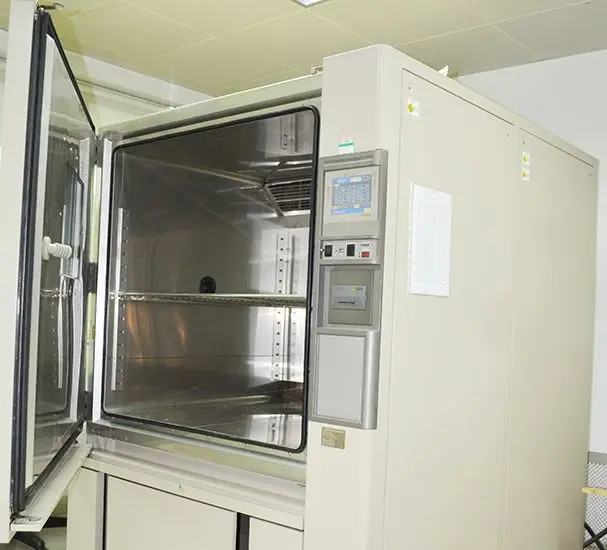
High Temperature Testing for Electronic Products
As we all know, electronic products are ubiquitous in our daily lives and their application fields continue to expand. As a resULt, the environmental conditions they face are becoming increasingly complex and diverse. Therefore, conducting high and low temperature tests on electronic products is essential. JJR Laboratory in China is a third-party testing organization accREDited by CNAS and CMA. Below is an introduction to high temperature testing for electronic products.

Purpose of Testing and Applicable Standards
Purpose of Testing
▶ To determine a product’s adaptability during storage, transportation, and usage under high-temperature environmental conditions.
▶ The severity of the test depends on both the temperature level and the duration of exposure.
Applicable Standards
▶ GB/T 2423.2 _Environmental Testing for Electric and Electronic Products – Part 2: Test Methods – Test B: High Temperature_
▶ IEC 60068-2-2 _Environmental Testing for Electric and Electronic Products – Part 2: Test Methods – Test B: High Temperature_
Test Conditions and Key Considerations
High Temperature Test Parameters
The technical parameters include: temperature, duration, and rate of temperature rise.
▶ Commonly used temperatures: 200℃, 175℃, 155℃, 125℃, 100℃, 85℃, 70℃, 55℃
▶ Common durations: 2h, 16h, 72h, 96h
Impact of High Temperature Stress on Products
▶ A commonly used rule when discussing product life is the “θ℃ rule.” For example, under the “10℃ rule,” a 10℃ increase in ambient temperature halves the product lifespan, and a 20℃ increase reduces lifespan to one-quarter. This illustrates how temperature influences product failure and aging.
▶ Effects of high temperature: aging, oxidation, cheMICal reactions, thermal diffusion, electromigration, metal migration, melting, vapor deformation, etc.
Precautions for Conducting High Temperature Tests
▶ The "10℃ rule" implies that high temperature testing is a common method used for component and system screening, aging, life, accelerated life, and evaluation testing, and plays a key role in failure analysis.
▶ Be mindful of the maximum temperature tolerance limits of the product or components.
▶ Ensure sample placement within the test chamber maintains at least 5 cm distance from the chamber walls to ensure uniform heating.
▶ After the test, allow the sample to stabilize either within the chamber or under standard room temperature and humidity conditions.
Report Handling Procedure
1. Business Inquiry
▶ The applicant provides product information, images, and testing requirements.
2. Engineering Quotation
▶ Engineers assess the provided materials, determine the appropriate test items, and offer a verbal quotation.
3. Payment
▶ Upon receipt of the sample, a written quotation is issued. The applicant arranges payment based on the written quote.
4. Documentation Submission
▶ Upon acceptance of the verbal quote, the sample and necessary documentation are submitted to our lab.
5. Sample Testing
▶ Testing is conducted in accordance with applicable standards or customer requirements.
6. Report Issuance
▶ Upon completion of testing, the laboratory issues a test report and closes the case.
About JJR Laboratory
JJR Laboratory is equipped with multiple high-temperature test chambers covering a range from room temperature up to 500℃. We provide high temperature testing services, IEC 60068-2-2 environmental adaptability tests, screening tests, and life tests for various electronic products, electromechanical equipment, automotive electronics, and communication devices.
Email:hello@jjrlab.com
Write your message here and send it to us
 How to Test IP68 Rating
How to Test IP68 Rating
 Differences Between FDA and LFGB for Food Contact
Differences Between FDA and LFGB for Food Contact
 Process and Precautions for Amazon CPC Certificate
Process and Precautions for Amazon CPC Certificate
 E-mark Certification Testing Service Laboratory
E-mark Certification Testing Service Laboratory
 Amazon ISO/IEC 17025 UL Testing Service Laboratory
Amazon ISO/IEC 17025 UL Testing Service Laboratory
 How to get CE Certification for Lighting Products?
How to get CE Certification for Lighting Products?
 CE Certification Standards & Process for Elect
CE Certification Standards & Process for Elect
 Japan METI Registration & Japanese Agent Servi
Japan METI Registration & Japanese Agent Servi
Leave us a message
24-hour online customer service at any time to respond, so that you worry!




